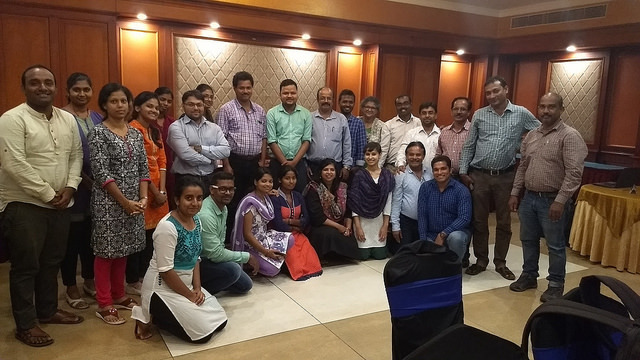The accidental translator
Posted by Remya Padmadas on September 30, 2017September 30th is celebrated around the world as International Translation Day. We're very fortunate that some of our wonderful translators and language reviewers shared their thoughts on translation with us on this occasion.
Madhu B. Joshi prefers to be known as a communication practitioner. She sees a great need for demystification in daily life and has been trying to work towards it. She has taught translation and a short, self-designed course of Indian Culture; mentored content teams of major education NGOs and designed educational audio-video programmes for CIET, NCERT. Joshi is a translator of Hindi poetry and short fiction in English and has presented major black feminist writers in Hindi. She is also a prolific and visionary collaborator of StoryWeaver. All of this, and we also know and love the other मधु बी. जोशी (in her own words)... जो खाना पकाना, इलाज करना, पौधे और कुत्ते पालना, राय देना.. जैसे बहुत से मुफ़्त काम करती हैं। उन्हें सब से ज़्यादा मज़ा बच्चों के लिए काम करने में आता है और वह इसका कोई मौका नहीं चूकतीं।
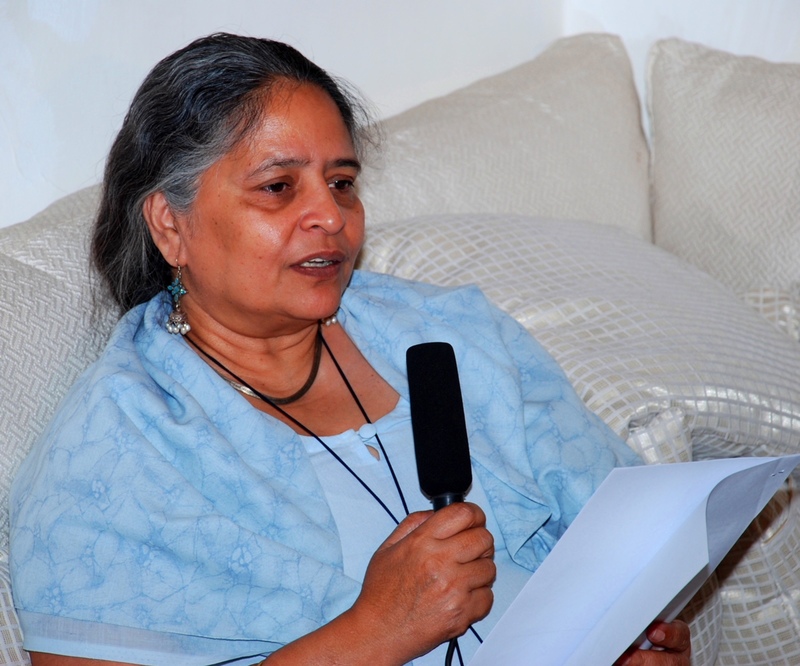
My interest in translation is the result of two socio-political accidents. A very courageous father and a supportive family allowed me to turn crisis into opportunities; I shudder at the thought of my contemporaries who suffered what I did.
I was in school in Delhi. Teaching science in Hindi in Government run schools was high on the agenda of the government at that time. In 1969, when I needed to choose the medium of instruction as a science student, coming from the hardcore Hindi-Hindustani following family, I chose Hindi over English. I had been educated in Hindi Medium government schools, most of my English came from my father, an ex-Royal Navy man in rough circumstances he had never expected to be in.
In earnest I (and hundreds of thousands other Delhi students) began to study science subjects in Hindi. The catch was, except for about three volumes of Biology books published by the NCERT, there were few CBSE syllabus compatible science textbooks available in Hindi. I remember our maths, chemistry and physics teachers who had studied in UP and Madhya Pradesh recommending some books that were compatible with the Intermediate/Secondary Board syllabi of those states; we supplemented that list with available books in English. As a result, we ended up reading in English and writing our answers in Hindi.
I had a good command of written and spoken English and Hindi, still my grades fell. I passed my Higher Secondary exam with not exactly flying colours. But I had unwittingly acquired translation skills and a deep respect for, and interest in facilitating communication.
Years earlier, seeing my interest in singing, my closet music-lover father sent me to the neighbourhood aunties who taught music and dance to about a dozen Bengali girls. The aunties were shocked to see a Garhwali girl wishing to be their student. In that gormint clony of Dilli, whoever had heard of a Garhwali girl wishing to sing? They refused point blank, “we only teach Bengali girls.” That was the end of my music dream. In school, the dumbest of children chose music and art as subjects. There was no other music education available in the vicinity. I followed the only course available to me - AIR was giving so much music for free, I learnt my music from Manna Dey, Mohammad Rafi, Malika Pukhraj, Begum Akhtar, Asa Singh Mastana, Salil Chowdhury, Madanmohan......
Much later I guessed the good aunties had not been able to communicate that they only taught Raubeendro Shaungeet which no one else in our colony showed the least interest in. I am sure they would have taught me just as well as they taught the rest of their students had they only known I wished to learn music irrespective of the brand.
These two incidents made sure I did a certain amount of translation besides other things.
Be the first to comment.
This is Ameena!
Posted by Remya Padmadas on September 27, 2017Almost seven weeks ago, we asked YOU the question “Who is Ameena?” and now, we have an answer!
The contest to find an illustrator for What is Ameena Up To?, a cheery story written by Roopa Banerjee, gave StoryWeaver a great collection of merry, adventurous, whimsical, curious girls. But the Ameena-est of them all was the character drawn by Preetam Dhar.
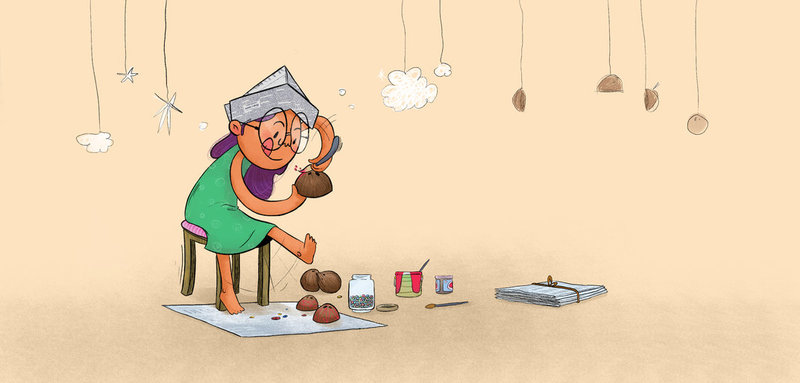
Having received over 50 fabulous entries, the task of selecting a winner was not easy. At the final stage, it was down to four contenders -- Sangeeta Das, Preetam Dhar, Rahil Mohsin and Alankrita Amaya -- who had all created splendid work.
But something about Preetam’s Ameena struck Vinayak Varma, the contest judge - “Preetam's Ameena looks friendly and approachable, but also slightly strange and quirky -- this is exactly the right mix of traits for an appealing children's book character. His illustration is very well drawn, shows detail without being overdone, and demonstrates good command of colour and composition.”
Preetam’s understanding of the crux of the story and the character is clear from his vision note, where he says, “Aspirations bigger than her size and gleam of curiosity in her eyes -- that's Ameena for you. She's the girl who lives an ordinary life like you and me, made extraordinary by her imagination and inquisitiveness.”
We’ll all be able to see Preetam’s take on the story in a few months, because winning this contest has earned him a paid contract with Pratham Books!
Thank you to everyone who participated in the contest. Keep an eye out for how your delightful illustrations are being used by our community on StoryWeaver!
Be the first to comment.StoryWeaver’s exciting foray into the East.
Posted by Remya Padmadas on September 26, 2017The Outreach team recently made a big leap towards reaching children in West Bengal and Odisha through two workshops conducted in Kolkata and Bhubaneshwar.
First stop: Kolkata.
We prepped for the workshop, famous Kusum rolls in hand and Kolkata in turn rewarded us with a fantastic turnout. Around 60 participants joined us from 12+ organizations working with children across the education and social sector. People had traveled from Asansol, Purulia, Bardhaman,Chandipur and even Jamshedpur for the workshop! We were amazed by the level of engagement everyone brought to the table throughout the all-day session. One such organization which attended in large numbers was Vikramshila Education Resource Society which works on a range of projects from early childhood education to capacity building from Ladakh in the North to Andaman in the South. One of their team-members raised the point that in West Bengal, if you travel 20km in any direction, the dialect and vocabulary changes. This slipperiness of the language can make teaching and reading a real challenge.
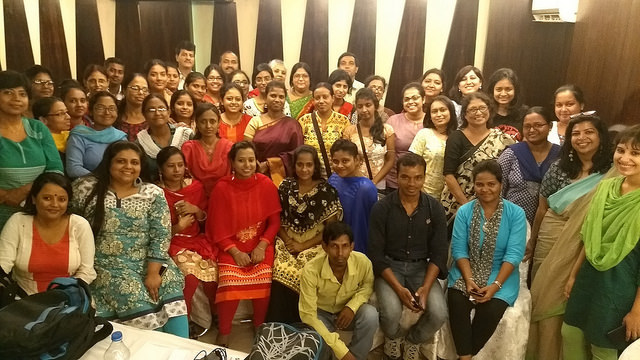
“What happens when the vocabulary of the teacher is not understood by the students and vice versa though both are speaking slight variations of the same language? What happens when students don’t relate to the texts they are reading?”
These very pertinent questions were echoed by many of the organizations in attendance. Fortunately we also had with us an example of a possible solution in the form of two gentlemen from Suchana. Suchana is a 10 year old community group, which works in Birbhum district of West Bengal towards the education of pre-school to class 10 children from Santal and Kora adivasi communities. Their teacher-translators have used the ‘Translate’ functionality of StoryWeaver to great effect to develop supplementary reading materials in Kora and Santali. Currently, 27 Kora books and 19 Santali books, both in Bengali script are on StoryWeaver; all this made possible by the Creative Commons license we follow.
The ensuing discussion was another aspect of our workshops: to bring people doing such good work in different ways into the same space so that they can begin to talk to each other and find areas of synergy.
We jumped into speaking about how Pratham Books came into being and how StoryWeaver was designed to spread the power of stories to all children, particularly those with limited means to access quality books. We delved into our repository of free content from flashcards and spotting books for early readers to our STEM and Life-Skills based books. The books can be used in a variety of ways: getting children to relate things in their science class to real life, using illustrations as speaking or writing prompts, and so on.
We had with us storytellers, teachers, librarians, program managers and content heads. They all put their heads together to visualize how to adapt the LSRW (Listening - Speaking - Reading - Writing) framework and content on StoryWeaver to their programs. Kolkata being the city of adda, we got into a debate of course about what kind of content we can and cannot show our children.
After a demo of how to translate and create your own stories on the platform, the participants got to work. We ended with different groups showcasing stories they had created on the platform during their work-time and we bid adieu with a group picture.
On to Bhubaneshwar we went!
We were greeted by the green, clean city with wide roads and took advantage of the day to plan for the workshop and also to fill our stomachs with ‘dalma’! The next morning at the workshop people began pouring in from diverse organizations like Patang and Nilachal Seva Pratisthan who work in rural areas on programs including literacy for children and employable skill-development training for young adults. A number of organizations working with tribal children and reading and literacy programs were also in attendance such as SELCO, American India Foundation and Bakul Foundation. All of us were gathered in the room with one mission - how do we get children of Odisha access to more books to read in languages they love and understand.
The main challenge that came up during discussion was once again finding adequate content and stories that represented experiences children could actually relate to, in languages that they felt comfortable with. This was where we introduced the audience to our Adi Kahani series- a set of 10 books based on the culture of tribal communities in Odisha, with stories developed and illustrated by local writers and illustrators and published in local tribal languages.
Participants curated and presented lists of stories based on themes they wanted to teach like using ‘Cube Cat Cone Cat’ to teach shapes and dimensions in Math. Some interesting directions were explored during the course of the workshop: Gram Tarang which is involved in skill training and also runs Tarang Vaani, an IVR radio was interested in recording some of our stories and airing them on radio to reach a wider audience! A team member from Sikshasandhan immediately expressed interest in collaborating to make this happen.
The most lively time came during an ice breaker post lunch: we had to learn how to make paper planes out of the resource challenges we’d previously penned down, fly them across the room and pick up a different plane to see if there was any overlap in challenges faced. After all the plane throwing and giggling was over, we settled down into work-time where participants aired the sentiment of common resource challenge and shared the stories they’d translated into Odia and some new creations as well.
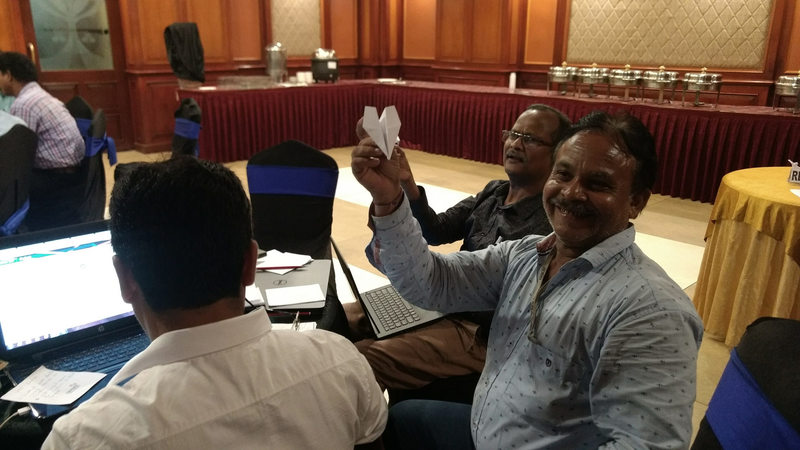
With a last hurrah and a group picture, we said goodbye to Bhubaneshwar. It had been a long, productive week and we were ready to go home and catch some well-deserved rest.
